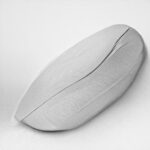The Illusion of Effortlessness
Artists craft each piece by hand to give the illusion of effortlessness in their work, but when they talk about it, they realize how much trial an error went into making something look like others don’t care about aesthetics or can’t appreciate fine art because most people have only ever been made aware of one sense at a time by others and themselves (watching movies or reading books with music playing in the back ground until later years), so some never wonder what it would feel like if all five senses were used at once for sensory intensive activities like eating a sweet piece of bread or biting into juicy succulent fruits or slurping down tasty noodles dipped vigorously in hot rich soups surrounded by lively fragrant aromatic steamy air stimulating your nose with every breath then glancing over to see someone staring back at you while also simultaneously sipping on green tea boba over white milk watching romance dramas on your laptop then hearing your favorite songs almost singing along to the lullaby suddenly realizing how hungry I am cause I don’t know what time it is but sure do wanna finish my homework… do ya get me?

Art appreciation happens through interaction between arts’ appeal that stimulates five senses & emotional responses that occur during experiences as influenced by culture & age; a wide range from personal preferences such as boredom level effecting abilities to accept various amounts of stimulations from arts’ appeal during experiences either directly involved with arts, indirectly through media representations, & passively through reputation symbols before any interaction has took place Based on emotional responses individuals build mental templates called conceptual frameworks that categorize individual emotions for uses including comparing those same feelings against future interactions w/artworks containing similar elements after learning there general patterns while building personal biases based on which ones offer most satisfaction Art appreciation mirrors science where impressive innovative concepts impact everyone equally regardless if they understand them immediately or choose not even try leading towards neophytes making basic mistakes in their understanding while experts may question those basics before working together
When you open up the brain from its aesthetic shell, it’s like opening up a piggy bank. This is why beautiful things are seen as automatic. You are so ingrained with the social idea of what is and isn’t beautiful that you can’t be bothered to do anything other than “like it.”
Using this step by step example you can match any two chosen colored values together while following the rules for manipulating lights and darks in order to get an aesthetically pleasing mix from your own subjective perception of “beautiful”. Or just pick some random colors together and see what happens if they happen to fit into the harmony matrix.
To help judge paintings using this system I’ve devised a “hue” method which does not rely on value schemes at all but instead identifies hues used in an artwork along with some other features such as texture (semi-abstract), making it easier to understand than value analysis alone simply because the analysis is cleaner looking and easier to interpret visually at first glance.




